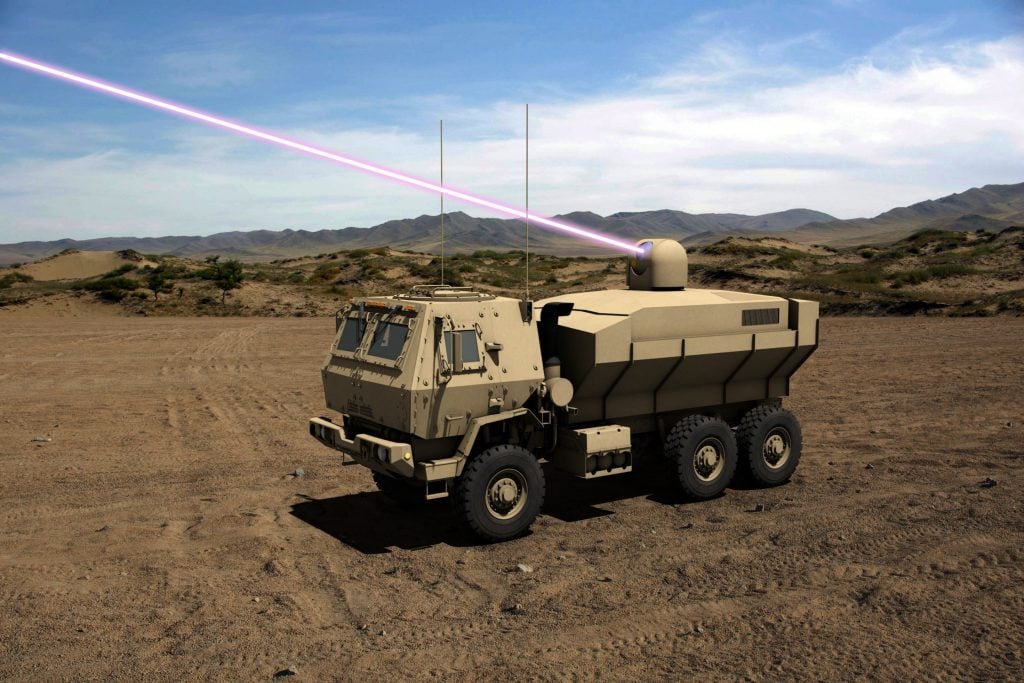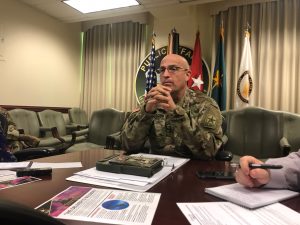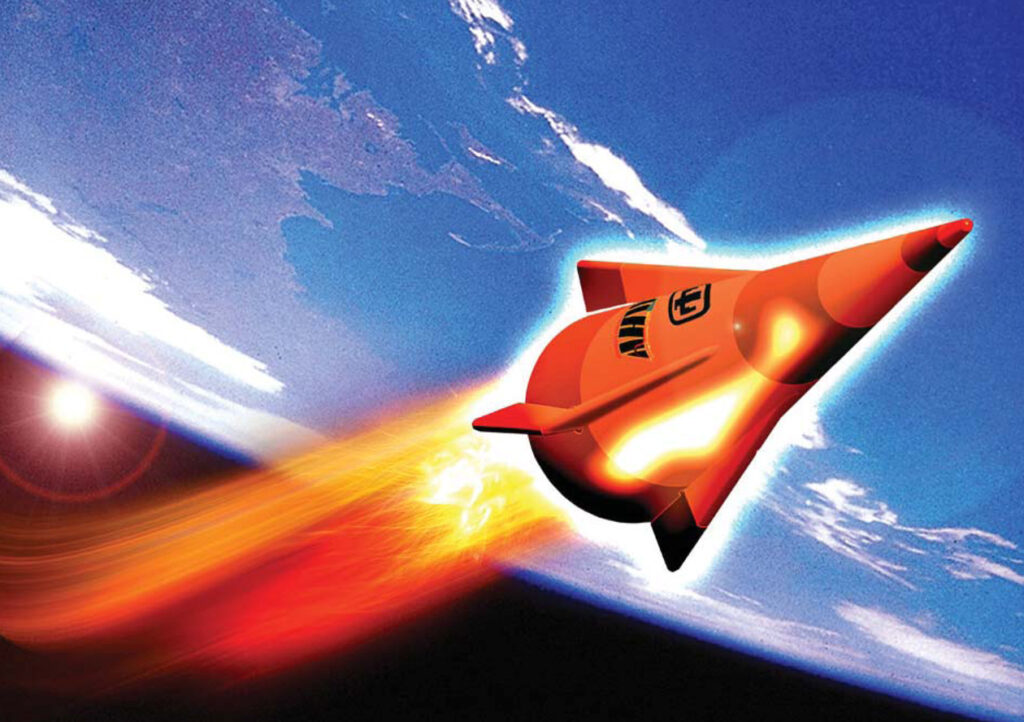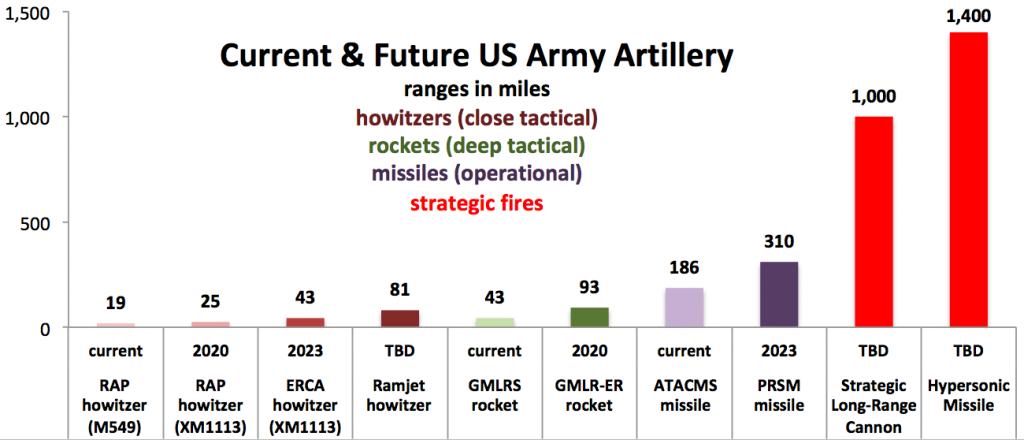Lasers, Microwaves, Hypersonics & More: Army RCCTO
Posted on

The original Dynetics/Lockheed concept for a 100 kW laser truck to kill drones and incoming rockets, artillery, & mortars. The Army is now pursuing a 250-300 kW weapon that could intercept cruise missiles.
SPACE AND MISSILE DEFENSE SYMPOSIUM: The Army’s three-star rapid capabilities chief is rushing to sign a contract on hypersonic missiles in three weeks, announced a new high-energy laser last week and just revealed a plan to build drone-killing microwave weapons — and he’s about to host an industry day asking innovators for even more ideas.
Lt. Gen. Neil Thurgood — the only Program Executive Officer (PEO) in the Army to wear three stars — is responsible for developing the most challenging high-tech pieces of the Army’s Big Six modernization plan and deploying them as fast as possible to counter Russia and China. His organization, the Rapid Capabilities & Critical Technologies Office, has effectively existed only since December, when it was radically reorganized out of the older and lower-profile Rapid Capabilities Office. But Thurgood told a contractor-rich audience here that RCCTO would be ready to receive them at its first-ever Innovation Day on Sept. 17, the first of what he hopes to be a quarterly series of pitch meetings.

Lt. Gen. Neil Thurgood
“You can think of that as a ‘shark tank.’ Don’t be scared,” Thurgood told the Space & Missile Defense Symposium here in Huntsville. RCCTO is looking for white papers, not full formal proposals. They should be outlines of new weapons systems concepts that are mature enough to move quickly into actual prototypes. Thurgood wants “something that is ready to do something with [and] get to the soldier, sailor, airman, marine as fast as we can, [using RCCTO’s] unique contracting authorities.”
Innovators who put forward the most promising papers will be invited to pitch their idea to officials representing not only the Army but the other three services, the joint Combatant Commands and independent organizations like the Missile Defense Agency, Thurgood said. Those meetings will be held in McLean, Va.
For the September pitch day, the RCCTO has released a list of areas of interest. These include developing “theater resilient communications,” including commercial capabilities in Low Earth Orbit (LEO); innovative ways to detect drone swarms; and multi-domain capabilities using space, cyberspace, electronic warfare, and long-range precision fire technologies to counter the sophisticated defensive networks known as Anti-Access/Area Denial (A2/AD).

Sandia National Laboratories glide vehicle, the ancestor of the new Army-built Common Hypersonic Glide Body
Microwaves & Lasers
The Army is already working with the other services on directed energy weapons to defend against incoming missiles, rockets, and drones. Thurgood said today the RCCTO has teamed with the Air Force to develop a prototype vehicle-mounted High Power Microwave (HPM) weapon that can shoot down swarming drones. The Air Force Research Laboratory at Kirtland AFB in June had previously unveiled the Tactical High Power Microwave Operational Responder, or THOR, in a demonstration for local press.
Since the Air Force already has a research and development program to develop technology, Thurgood said,”I don’t need to reinvent that technology, I need to buy it from the Air Force.”
The plan is for a demonstration of the microwave weapon in 2022, and fielding of four prototype vehicles in 2024. The Army intends to pair it with a 250-plus-kilowatt laser and traditional interceptor missiles as part of its middle-tier air and missile defense system, the recently overhauled IFPC (Indirect Fire Protection Capability). Each component has a different strong suit:
- Missiles like the AIM-9 (originally designed for fighter jets) can take out the fastest and highest-flying targets, such as attack jets and supersonic cruise missiles, and can do so in all sorts of weather. But they are expensive, bulky, slow to reload, and difficult to resupply once fired, forcing frontline units to husband them.
- A laser can keep firing indefinitely as long as its vehicle has gas to run the engine, allowing it to wipe out large numbers of lower, slower, and softer targets like drones and subsonic cruise missiles. But its beam can be disrupted by rain or heavy fog, and it has to hold focus long enough to burn through each target in turn, making it less effective against swarms than the microwave. “Lasers are not the panacea of life,” Thurgood said.
- That’s why the Army is now adding the microwave weapon, a new addition to the IFPC concept. if the laser’s a sniper rifle, the microwave’s a shotgun. It sends out a wide pulse of energy that can disable the electronics in a whole swarm of oncoming drones at once, crippling or crashing them.
The three IFPC weapons will be mounted on heavy trucks and deployed to protect “static and semi-static sites” like command posts, supply depots, and forward airfields. They represent the middle tier of the Army’s future air and missile defense system, with high-performance, high-priced THAAD and Patriot taking out ballistic missiles, while the new Maneuver Short-Range Air Defense (MSHORAD) variants of the 8×8 Stryker — variously armed with guns, missiles, or a new 50 kW laser — move forward with the frontline units to protect against the most numerous threats: rockets, artillery shells, mortar rounds, drone, and helicopters.

Anti-aircraft Stryker variant chosen by the US Army for its Maneuver Short-Range Air Defense (MSHORAD) mission: 4 Stinger missiles on one side, two Hellfires on the other, with a 30 mm autocannon (and 12.7 mm machinegun) in between (Leonardo DRS)
The Army recently modified its plan to develop the laser-armed Stryker variant, with a new “competitive cost share” approach through a prime contract just awarded to Kord Technologies. As lead integrator, Kord has awarded laser weapon module subcontracts to Raytheon and Northrop Grumman, which will compete for the chance to be integrated on the final prototype. Kord also has partnered with the Stryker’s legacy manufacturer General Dynamics Land Systems to deliver four prototype vehicles to an Army platoon by the end of fiscal year 2022.
In the same announcement, the Army announced a change to the larger, truck-mounted IFPC laser as well. Originally, prime contractor Dynetics and subcontractor Lockheed Martin charged with developing a 100 kilowatt laser on a truck under a $130 million contract awarded in May. But because “this is a case where industry has driven technology faster than we had anticipated,” Thurgood said, the 100-kW project will end at critical design review, without actually building the weapon. Instead, the same Dynetics-Lockheed team will build on both their own work and a new multi-service collaboration led by OSD to develop a 250-300 kilowatt laser. That weapon will be demonstrated in 2022, and if successful four vehicles will be prototyped and fielded in 2024.
Paul Lemmo, vice president at Lockheed Martin for integrated warfare systems, told Breaking Defense today that “we’re going to up the power on that from 100 kilowatts to something over 250,” he said. “The contract award was a few months ago… the new news is that he wants to take that from 100 kilowatts to over 250.”

RAP: Rocket Assisted Projectile (current M549A1 or future XM1113). ERCA: Extended Range Cannon Artillery. GMLRS-ER: Guided Multiple-Launch Rocket System – Extended-Range. ATACMS: Army Tactical Missile System. PRSM: Precision Strike Missile.
SOURCE: US Army. SLRC and Hypersonic Missile ranges as reported in Army Times.
Despite all the news on directed energy, Thurgood said that his number one priority remains getting the Long Range Hypersonic Weapon (LRHW) experimental prototype to the field by 2023. The LRHW will comprise a maneuverable Common Hypersonic Glide Body, jointly developed by the Army and Navy for future use by all the services; a command and control center; and four transport erector-launcher vehicles. A contract will be signed for the glide body with a provider sometime within the next three weeks, he said.
He said that RCCTO is partnering on the hypersonic weapon with Air Force, the Navy, the Army and MDA. “The technologies we need for offense and the technologies we need for the defense are actually very similar. So there is actually an MOA between all of us that dictates what are relationships are.” He also noted that the Office of Secretary of Defense “owns the design of the glide body” right now but that will transfer to the Navy Oct. 1; the Army “owns the production of the glide body.”
Subscribe to our newsletter
Promotions, new products and sales. Directly to your inbox.
